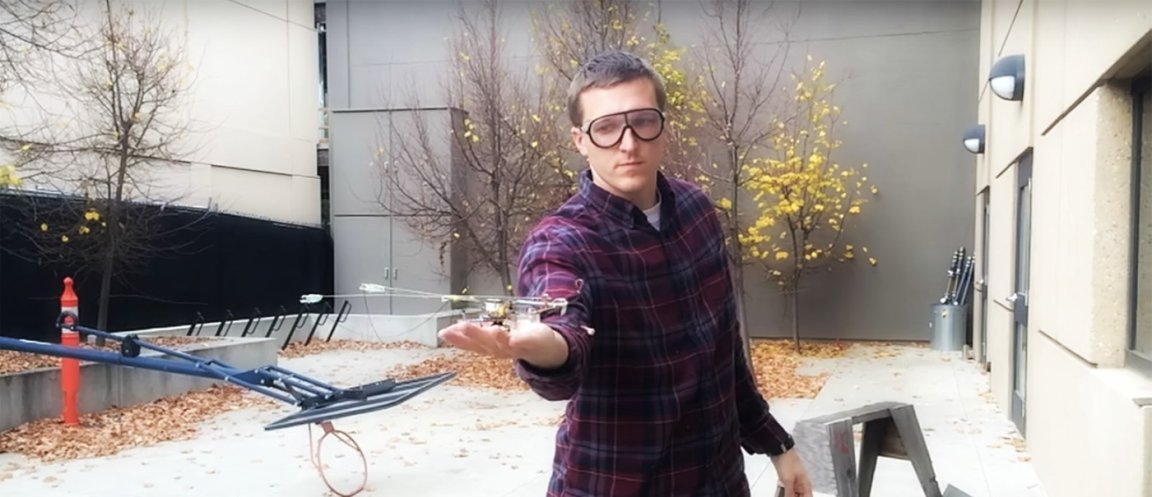
SCAMP
While it looks nothing more than an unassuming quadcopter, Stanford’s SCAMP (Stanford Climbing and Aerial Maneuvering Platform) has a lot more tricks up it sleeve—this drone can not only fly, it can also perch, and climb on walls.
SCAMP basically takes everything the Biomimetics and Dexterous Manipulation Lab has learned from previous projects, such as the Stickybot (which mimics the gecko’s wall climbing capability), to create this new drone. The team modified the climbing technology applied on the Stickybot so that SCAMP could climb faster. To achieve SCAMP’s current maneuverability, they ensured it could take longer steps and added microspines to its feet—similar to what a praying mantis has.
To achieve its ability to perch, the climbing mechanism for the machine was placed on top of the quadrotor, which allows it to press against surfaces for better stability.
“It operates outdoors on rough surfaces like concrete and stucco, using only onboard sensing and computation. In this video, we show off some of SCAMP’s features, including new ones unique to its hybrid capabilities, like automatic recovery from climbing failure through timely application of rotor thrust,” the team details on their website.

SURVEILLANCE
All these new features lend itself to a drone that could potentially become a tool for surveillance missions for first responders or military.
Research shows that SCAMP can operate from minutes to hours.
But the team admits that they still have a long way to go in terms of improving the machine. The goal is to create an entire line of robots with perching and climbing capabilities but instead of a copter to give the drone flight, it will have silent, fixed-wing gliders.